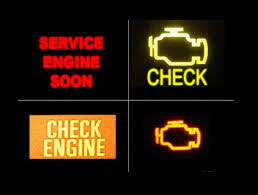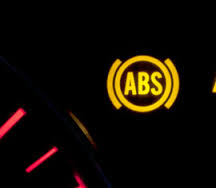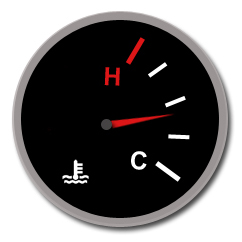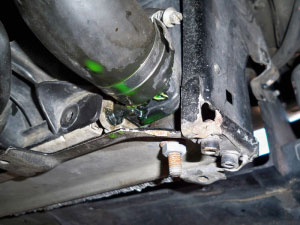Posted on 2/16/2017

If your mechanic is telling you don’t worry about a check engine light, it might be best advise to find a new mechanic. If your check engine light is on there is a problem, it may be hard to find and it may not be something that will make your car break down, but there is still a problem. If the lights on and you have another failure you will have no way of knowing. If the engine light is on it needs to be inspected
Posted on 1/30/2017

It’s a fact that your car will stop in a shorter distance if we can keep the wheels rolling, sliding or skidding the tires will increase your stopping distance. These systems were designed to keep your wheels rolling in a panic stop. Each wheel has a sensor to let a computer know if the wheel is spinning, if a wheel stops in a hard stop situation the system will remove some of the pressure to that wheel and allow it to spin, in turn shorting your stopping distance
Posted on 1/15/2017

The temperature gauge in your vehicle is designed to measure the temperature of your engine’s coolant. This gauge will tell you if your engine’s coolant is cold, normal, or overheating. It is an important dial that is located on the dashboard of your vehicle. Reasons the Temperature Gauge Reads High If the temperature gauge is reading high, this can mean your vehicle is overheating. Another reason your reading might be high is you could be losing coolant. A small leak or evaporation may be the cause of losing coolant. A third reason your temperature gauge is reading high could be because the thermostat is broken. If this is the case, you may need a coolant temperature switch replacement. The last reason the temperature gauge is reading high can be because of a water pump, or water pump gasket failure. If the water pump is malfunctioning, it may need to be replaced so it is best to have the vehicle looked at by a professional. Reasons the Temperat ... read more
Posted on 1/15/2017

While the largest part of your engine is mechanical, hydraulics plays a significant role. You’ll find fluids at work in a number of different areas. Your car’s fluids include: Engine oil Transmission fluid Coolant Power steering fluid Brake fluid Washer fluid All of these fluids must be transported from one place to another in order to do their job. While some fluids run primarily within the engine or another component (oil, for instance, or transmission fluid), others don’t. Consider engine coolant – it’s stored in your radiator and overflow tank/reservoir, but must move from there to the engine and then back again. Power steering fluid is another prime example – it must be moved from the power steering fluid reservoir at the pump, into the rack and then recirculated once more. Moving fluid from one area to another requires hoses, and hoses are prone to wear and tear. They’ll eventually decay a ... read more